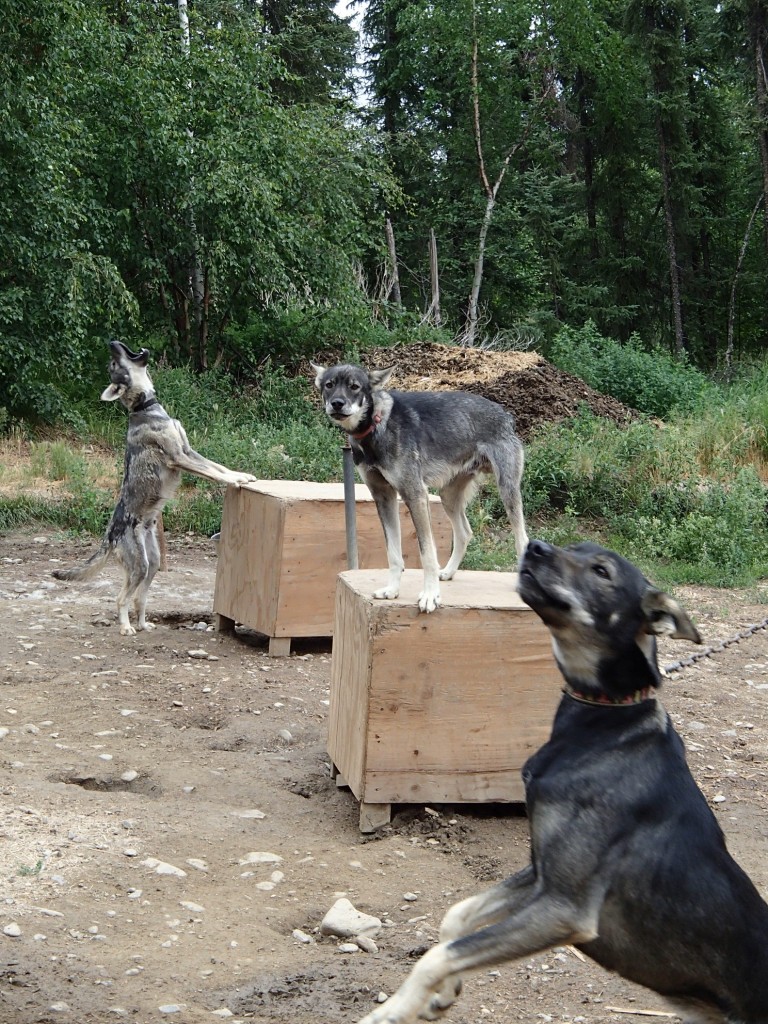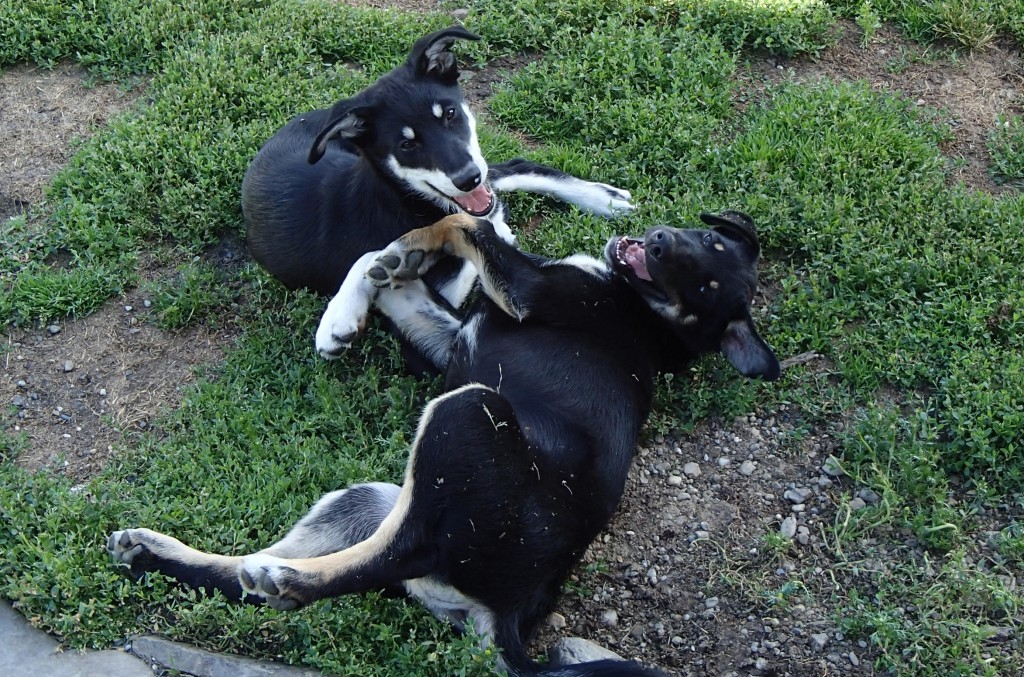This week I had the opportunity to meet with visitors at the Yukon Quest office in Fairbanks. Mushers bring in dogs and are there in the summer to meet guest, talk about the Yukon Quest, what it takes to run 1000 miles, and answer questions.
Mostly it ends up being about the dogs, which is awesome because the dogs are the real superstars. But in working with the general public I have found that many of the questions revolve around the theme of: why are the dogs so small & look nothing like what people expected sled dogs to look like. It can be a little disheartening to have so many people doubt your dogs, or question what you do. That is why I think it is so important to share what makes my dogs so uniquely capable of doing what they do; explaining how something that seems so daunting and impossible to so many is, in reality, something these dogs excel at.

Orchid charmed visitors to the Yukon Quest office. Many were surprised to hear that our sweet little girls was a leader, who finished both the Yukon Quest & Iditarod last year.
In that spirit I am revisiting some old posts where I have shared different bits of sled dog science, as well as some new links and resources that help explain the amazing capacity of these canine athletes.
The first issue I would like to address is why Dew Claw dogs look nothing like the Disney Snow Dogs. We have Alaskan Huskies, a completely different breed then the Siberian Husky, the dog you are most likely to see in commercials and movies. To address this I wrote a post called “Yes these are Real Huskies” that has a link to the genetic research that proved Alaskan huskies are a breed of their own. Siberian Huskies are a beautiful dog, and wonderful in their own right. But I am biased, I love (and brag about) my dogs! In Alaska the husky has a rich history and the bloodlines run deep for generations, tracing back through villages and families. I hope more people will come to recognize the Alaskan Husky, a purely performance based breed, for their strength and ability.

Dog get pretty excited when they think there is a chance they might get to go for a run. In this photo you can see Spanky (far left) has not fully shed out his winter coat. The dogs grow denser with a think undercoat in winter.
The size of my dogs is a concern for many people unfamiliar with sled dogs. Let me begin by saying that our dogs will undergo multiple veterinary exams every year, their diet is the highest quality, and their health and condition is constantly monitored. I can say with assurance that our dogs are fit and healthy. I tell people to think about the men and women running marathons, what do they look like? strong and fit with lean muscle mass. When looking at a sled dog team think Marathoners, UltraMarathoners really, because that is what my dogs are.
As I was speaking with visitors and mulling the idea for this post around in my mind a funny thought occurred to me. Here is the background info. I follow the blog of a prolifically competitive runner/triathlete Dane Rauschenberg, See Dane Run. In addition to his athletic accomplishments he is also a dynamic motivational speaker. And because running clothing tends to leave little to the imagination when it comes to a persons body type I can say with certainty he is lean and muscled (like a healthy sled dog). Now here was the funny thought that occurred to me as I was being asked for the umpteenth time why my dogs were so lean. Can you imagine someone going to hear Dane speak, (or any of these amazing runners) and saying, “How can you be a long distance runner, you’re so skinny”. We expect human athletes to be strong healthy and fit, I am suggesting that canine athletes are as well.
For people unaccustomed to working with athletes, human or canine, let me share with you some information on the importance of proper body weight for athletes.
Common sense tells us that carrying extra unhealthy weight would slow us down. Of course we must consider more then just the number on the scale, and this article gives a good quick overview of the weight – performance issue.
Now lets look at of the role weight plays in calculating VO2 max: from Active.com
How Weight Affects Performance – Another way to look at how weight (or mass) impacts running: Analyze VO2 max, which is simply a calculation of the amount of oxygen used when running. VO2 max is a number that is often reported as ml/kg/min. If you decrease your mass-for example, the kilograms that you weigh-you can increase the number. It makes sense because your heart and lungs are still as proficient at pumping oxygen-rich blood to working muscles, but there is less mass to lug around the track or through the streets in a road race.”
*As a side note on the cardiovascular capacity of the sled dogs, you must read Matters of the Heart, by By Jerry Vanek, DVM ,he explains that sled dogs actually have larger then average hearts.
This article ‘How Body Fat Affects Athletic Performance’ goes on to explain more about the connection between body composition and performance. And makes the interesting observation that horse racing has recognized for some time the connection between weight and speed.
Now do not think for a minute it is a simple matter of keeping dogs thin, the key is keeping dogs healthy. We are learning more all the time about the science of sled dogs, proper training, nutrition, and care. Feeding these long distance athletes is both a science and an art. I share some insights and information for people in my post “I know what dogs like“.
If you have not already checked it out, I hope you will pop over and read my post on the “Joy’s of a Runners High“. I personally LOVE the runners high, and the feeling of strength and contentment it brings me. I have also had the honor of running with a team that I know in my heart loves to be out there with me tackling new trail. This research was something mushers intrinsically knew, our dogs LOVE to run.
Previously I tried to sum all this up in a Letterman style “Top 10 Reasons I LOVE my dogs” and it includes additional resource links that I hope people will find interesting.
To everyone who came and visited with us at the Yukon Quest office this week, Thank you.
Also Thanks to our blog readers as well.
It is a pleasure to share our passion for mushing
and love of dogs.



